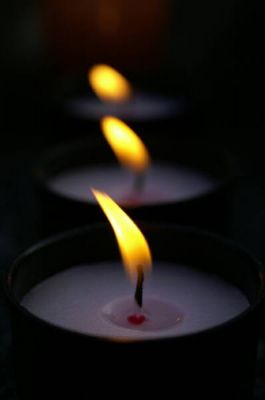 When it comes to The New York Times, I can be as hypercritical as the next member of a traditional religious flock.
So I have to admit that I went straight to the online files this morning, looking to see if the newspaper of record covered the Indonesia executions of three Roman Catholic men convicted in connection with Muslim-Christian clashes in Central Sulawesi. Did the Times cover the story, or just use wire copy? And, the crucial question, did the newspaper ignore the angle of the story that cynical old me expected it to ignore?
When it comes to The New York Times, I can be as hypercritical as the next member of a traditional religious flock.
So I have to admit that I went straight to the online files this morning, looking to see if the newspaper of record covered the Indonesia executions of three Roman Catholic men convicted in connection with Muslim-Christian clashes in Central Sulawesi. Did the Times cover the story, or just use wire copy? And, the crucial question, did the newspaper ignore the angle of the story that cynical old me expected it to ignore?
I am happy to report that the dateline story from Jakarta was written by Times reporter Raymond Bonner and that, for the most part, it covers all the bases that anyone concerned about religious liberty and the rights of religious minorities would want to see covered. Here is a crucial slice of the story:
The government ignored a last-minute appeal from the European Union to declare a moratorium on the death penalty.
No evidence directly linked any of the condemned to killings, but two were found to be ringleaders of a Christian militia that killed 200 Muslims in 2000, and the third to have instructed Christians in the use of arrows, according to trial observers.
The European Union appeal did not specifically mention the case of the Christians. Its plea was aimed at halting all executions, including those of three Bali bombers on death row for their role in the attacks on nightclubs in 2002, which killed 202 people, European diplomats said.
Now, I think it is rather strange to make the death penalty element such a major part of the story (and I say that as a pro-life guy who is totally opposed to the death penalty). The crucial elements of the story are much more basic: Did the men receive fair trials? It is clear they had some role in the violence, but were they guilty of the crimes for which they were sentenced? Human-rights groups have raised major questions.
But here is the big question that no one seems to want to ask. What happened to the other people captured and jailed in connection with the violence? In particular, what happened to leaders of the Muslim rioters? What kinds of sentences have they received?
This is where you have to start reading between the lines of the Times report and other mainstream stories, such as this one from Reuters or this Associated Press report.
At their 2001 trial, no one testified seeing any of (the three men) kill anyone, Dave McRae, an expert in the Poso conflict at the Australian National University, wrote in The Jakarta Post on Wednesday. Even if they were leaders, "their death sentence is excessive," he wrote. More than 150 men have been tried in connection with the Poso violence, but no other sentence has been more severe than 15 years in prison, Mr. McRae wrote.
The executions of the three men had become entangled with the case of the Bali bombers. In this overwhelmingly Muslim country, the government considers that the risk of political protests would be too great if it executed the Bali bombers and not the Christians.
More than 150 men have been tried? Can we have more information about that?
How do the sentences of the Muslims involved in the violence -- in the secular nation of Indonesia -- compare with those of the Christians convicted? (The AP story, I should note, does say that very few Muslims were convicted and that they received only short sentences.) And why do you have to execute three Catholics, who received trials that human-rights activists insist were strange at best, as a way of helping the nation brace for the executions of the Islamist bombers in the Bali case?
However, the Times report is certainly better than most of the tiny stories featured in American newspapers today. So let me end with this question: How many GetReligion readers saw any coverage of this human-rights case in the media today? How high was this story played in your local media?
